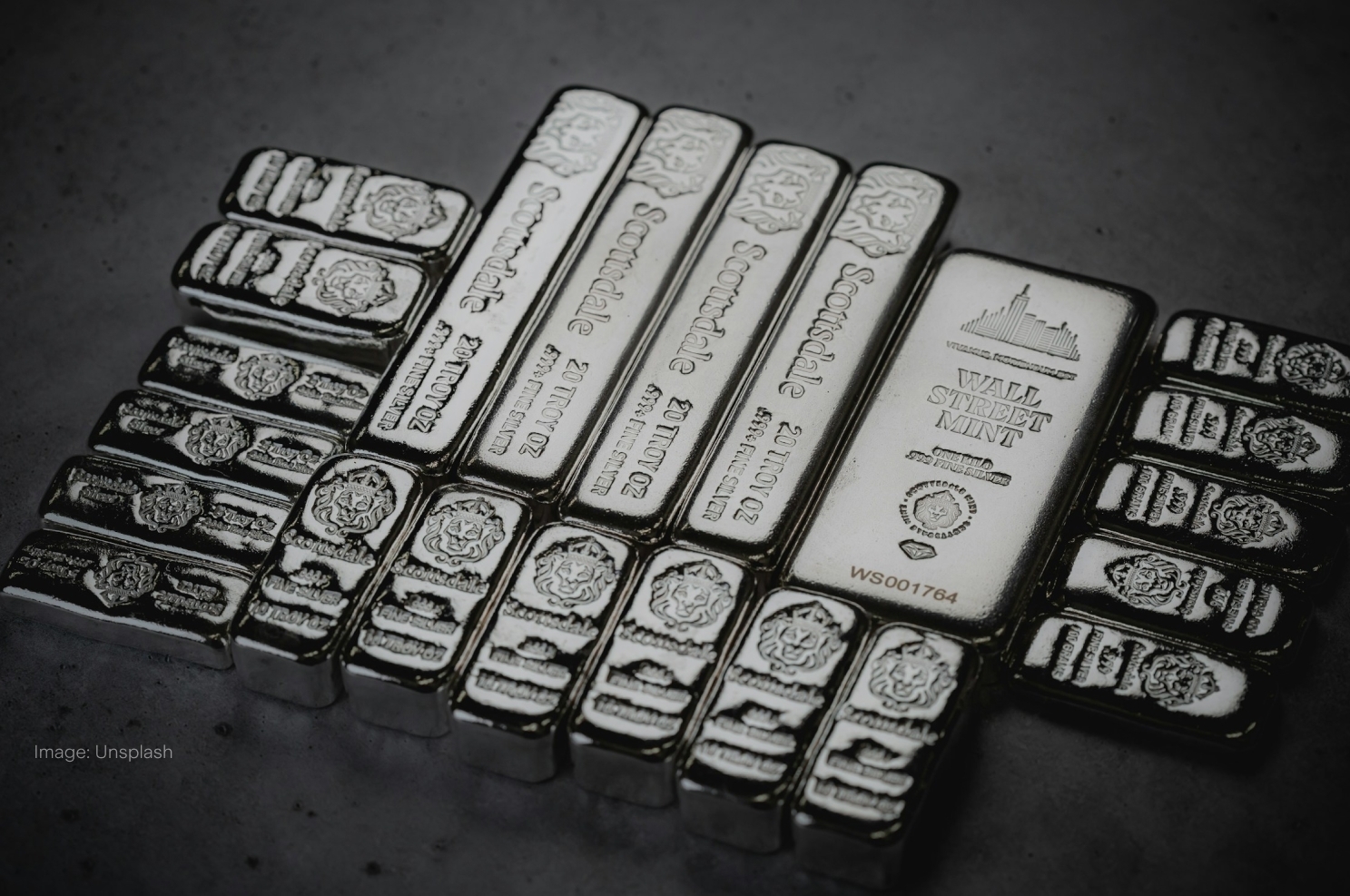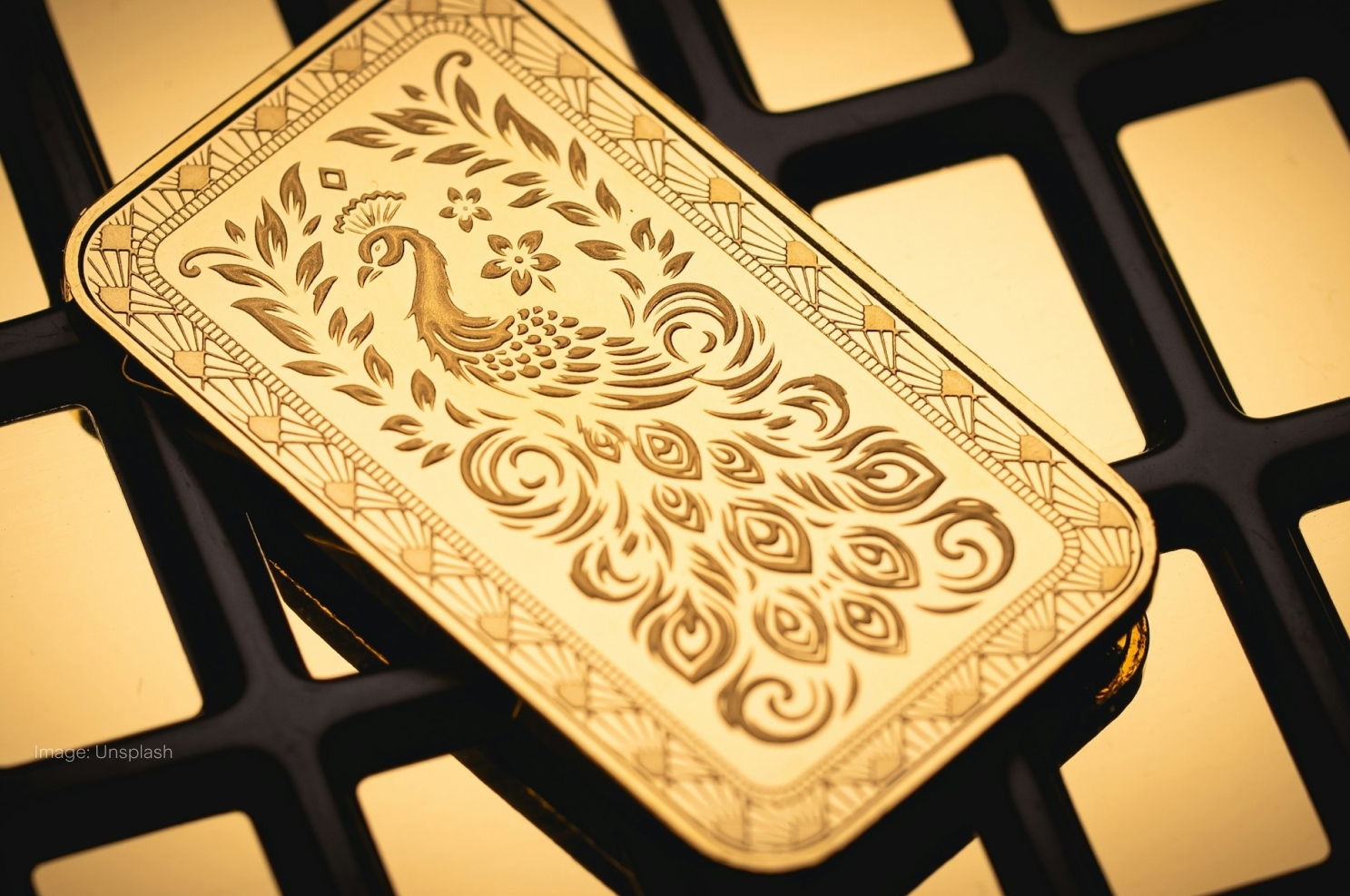
What are the best silver ETFs on the ASX?
Silver ETFs deliver affordable exposure to a precious metal with strong industrial demand and portfolio diversification benefits.
What is a silver ETF?
A silver ETF lets you invest in silver without storing physical metal. It’s a smart way to hedge against inflation, diversify your portfolio, and enjoy low-cost, easy access through your brokerage account.
Check out this list of the top silver ETFs
Company Name | Ticker | Share Price | 1Y Return | Assets Under Management |
|---|---|---|---|---|
Global X Physical Silver | $47.63 | +12.36% | $531.47m | |
Global X Physical Precious Metals Basket | $295.85 | +30.07% | $71.00m | |
VanEck Gold Miners ETF | $78.43 | +46.54% | $761.79m | |
VanEck Australian Resources ETF | $32.72 | -13.92% | $299.21m | |
Betashares Global Gold Miners Currency Hedged ETF | $8.68 | +40.68% | $96.83m | |
Betashares Energy Transition Metals ETF | $7.58 | -10.51% | $20.38m |
Share price data as of 23 May 2025. Source: ASX
*The ETF list is ranked by exposure to silver and assets under management. When deciding what funds to feature, we analyse the financials, recent news, liquidity and volume, and whether or not they are actively traded on Stake.
Decide if these ASX silver ETFs are right for your portfolio
1. Global X Physical Silver ($ETPMAG)
Global X Physical Gold is backed by physical silver and tracks the Australian dollar price of the precious metal. It offers a low-cost and secure way to access physical silver via the ASX exchange and avoids the need for investors to store their bullion. It charges an annual management fee of 0.49%.
Each physical bar is segregated, individually identified and allocated. Global X posts audit reports of silver bullion held in the portfolio on the fund’s website. The latest bar list shows the fund holds more than 11,000 bars of silver.
🆚 Compare ETPMAG vs PMGOLD→
2. Global X Precious Metals Basket ($ETPMPM)
Global X Precious Metals Basket offers silver exposure among a basket of precious metals including gold, platinum and palladium. The fund tracks the Australian dollar price of a basket of these metals. It delivers low-cost access to the physical bars of the four precious metals via the ASX and avoids the need for investors to store the metals. It charges an annual management fee of 0.44%.
As at 30 April, 19.4% of the portfolio was allocated to silver, with gold accounting for 66.3%. The fund ETPMPM is backed by physically allocated metal. Each physical bar is segregated, individually identified and allocated.
3. VanEck Gold Miners ETF ($GDX)
The VanEck Gold Miners ETF offers access to silver through a basket of global gold mining stocks. Many gold miners will produce silver as a byproduct of the gold mining process. Portfolio holdings like Wheaton Precious Metals ($WPM) and Franco-Nevada ($FNV) have silver royalty streams and are in the top five holdings. Royalty streams are metal purchase agreements with other miners who produce silver as a byproduct.
Around 5% of the portfolio is exposed to silver, while 87.5% is exposed to gold. The ETF charges an annual management fee of 0.53%, and it pays an annual dividend.
4. VanEck Australian Resources ETF ($MVR)
The VanEck Australian Resources ETF offers access to a diversified portfolio of mining stocks, some of which produce silver. BHP ($BHP), the second largest holding, is better known for iron ore and copper, but it produces silver from its copper operations in South America and South Australia. The portfolio also contains South32 ($S32): it operates the Cannington mine, one of the world's largest producers of silver and lead.
The ETF charges an annual management fee of 0.35%. It pays a dividend twice a year.
5. Betashares Gold Miners Currency Hedged ETF ($MNRS)
The Betashares Gold Miners Currency Hedged ETF tracks the performance of an index that comprises the largest global gold mining companies (excluding Australian ones), hedged into Australian dollars. Around 7.3% of the portfolio is exposed to silver.
Similar to the VanEck Gold Miners ETF, it offers exposure to precious streaming companies: Wheaton Precious Metals is the second largest holding, and Franco-Nevada is the fourth largest holding. The ETF charges an annual management fee of 0.57% and pays a semi-annual distribution.
6. Betashares Energy Transition Metals ETF ($XMET)
The Betashares Energy Transition Metals ETF provides exposure to global producers of copper, lithium, nickel, cobalt, graphite, manganese, rare earth elements and silver. The top stock is MAG Silver ($MAG), which has a 44% stake in the Juanicipio silver mine in Mexico. Pan American Silver ($PAAS) launched a US$2.1b bid for MAG Silver in May 2025.
The ETF charges an annual management fee of 0.69% and pays a distribution at least once a year.
💡Related: What are the best ASX renewable energy stocks?→
ETPMAG vs Silver Mining ETFs – What’s the better choice?
Global X Physical Silver provides pure exposure to the Australian dollar silver price. ETFs that contain silver miners may reflect movements in the silver price, but the stocks may move on specific company news like earnings and production results.
ETPMAG has a low correlation with Australian and U.S. stocks. It has a fairly strong correlation with the gold price.
ETPMAG offers investors a focused and liquid way to invest in silver without taking on storage costs. While it may add diversification to a portfolio, investors will be exposed to the ups and downs in the Australian dollar price of the metal. The fund does not pay any distributions unlike mining stocks or mining ETFs.
How to buy silver ETFs in Australia
The main way to invest in silver ETFs is through funds listed on the ASX, using an online investment platform. Follow our step by step guide below:
1. Find a stock investing platform
To buy silver ETFs on the ASX, you'll need to sign up to an investing platform with access to the Aussie stock market. There are several share investing platforms available, of which Stake is one.
Get started with Stake
Sign up to Stake and join 750K investors accessing the ASX & Wall St all in one place.
2. Fund your account
Open an account by completing an application with your personal and financial details. Fund your account with a bank transfer, debit card or even Apple/Google Pay.
3. Search for the company or ticker symbol
Find the company name or ticker symbol. It is advised to conduct your own research to ensure you are purchasing the right investment product for your individual circumstances.
4. Set a market or limit order and buy the shares
Buy on any trading day using a market order, or a limit order to delay your purchase of the asset until it reaches your desired price. You may wish to look into dollar cost averaging to spread out your risk, which smooths out buying at consistent intervals.
5. Monitor your investment
Once you own the stock, you should monitor its performance. Check your portfolio regularly to ensure your investment is aligning with your financial goals.
What silver ETFs are available on Wall St?
Wall Street offers a broader range of silver ETFs than the ASX.
The largest is the iShares Silver Trust ($SLV). It has US$15b in assets under management and charges an annual fee of 0.50%. Other silver ETFs include abrdn Physical Silver Shares ETF ($SIVR) and the Sprott Physical Silver Trust ($PSLV).
Proshares offers an Ultra Silver ETF ($AGQ) – which targets twice the daily return of the Bloomberg Silver Subindex, and an UltraShort Silver ETF ($ZSL), which targets two times the inverse of the daily performance of the index.
These are riskier investments and investors need to understand that holding these ETFs longer than a day may deliver a return that is higher or lower than the daily target return.
What are the risks associated with investing in silver ETFs?
Investing in silver ETFs exposes investors to volatility in the silver price. Silver prices can be volatile and are influenced by economic data, industrial demand, interest rates and geopolitical tensions.
While larger silver ETFs are relatively liquid, some smaller or leveraged ETFs may have lower trading volumes, which could affect prices when trying to enter or exit a trade.
And what are the benefits?
A silver ETF lets you invest in silver without dealing with coins or storage.
It’s a simple, affordable way to hedge against inflation, add diversification to your portfolio, and trade easily through your brokerage account. Plus, it offers low fees and real-time pricing, making it a convenient choice for investors.
What are the historical performance trends of silver ETFs during market volatility?
Silver ETFs can experience noticeable price swings during volatile markets.
For example, during the start of the COVID-19 pandemic in 2020, silver ETFs dropped as investors moved to cash. Once markets settled and stimulus arrived, silver prices and silver ETFs rebounded.
Silver often acts as an inflation hedge, which can boost ETF demand and value. However, rising interest rates and a strong dollar can put downward pressure on silver prices.
While silver ETFs provide diversification and potential protection against inflation, they are still exposed to market risks and economic changes.
This article was written by Robert Guy - Senior Markets Writer at Stake.
Disclaimer
The information contained above does not constitute financial product advice nor a recommendation to invest in any of the securities listed. Past performance is not a reliable indicator of future performance. When you invest, your capital is at risk. You should consider your own investment objectives, financial situation and particular needs. The value of your investments can go down as well as up and you may receive back less than your original investment. As always, do your own research and consider seeking appropriate financial advice before investing.
Any advice provided by Stake is of general nature only and does not take into account your specific circumstances. Trading and volume data from the Stake investing platform is for reference purposes only, the investment choices of others may not be appropriate for your needs and is not a reliable indicator of performance.
$3 brokerage fee only applies to trades up to $30k in value (USD for Wall St trades and AUD for ASX trades). Please refer to hellostake.com/pricing for other fees that are applicable.
Article sources
[1] ETF providers, ASX

.jpg&w=3840&q=100)

